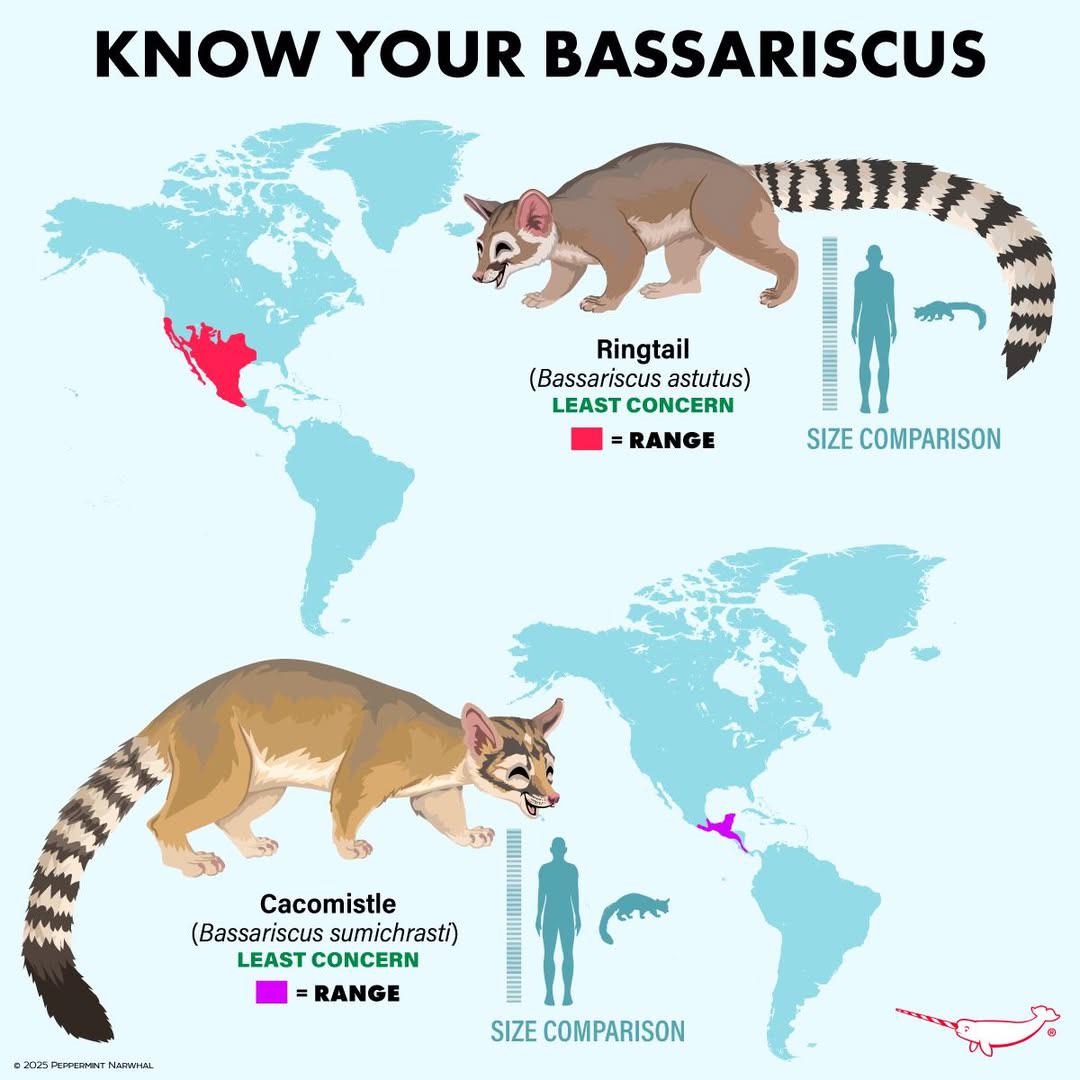Bassariscus Species Distribution Map


Alex Cartwright
Senior Cartographer & GIS Specialist
Alex Cartwright is a renowned cartographer and geographic information systems specialist with over 15 years of experience in spatial analysis and data...
Geographic Analysis
What This Map Shows
The "Distribution of Bassariscus Species" map provides a detailed visualization of where various species of the genus Bassariscus are located across North America. This genus, commonly known as ringtails and cacomistles, includes fascinating animals that are often overlooked in discussions about biodiversity. The map highlights their habitats, which range from arid deserts to lush forests, showcasing the adaptability and ecological significance of these mammals.
Deep Dive into Bassariscus Species
Bassariscus species are members of the family Procyonidae, which also includes raccoons and coatis. The two primary species in this genus are the ringtail (Bassariscus astutus) and the cacomistle (Bassariscus sumichrasti). These small to medium-sized carnivores are known for their distinctive long tails with rings, which serve not only as a form of communication but also as a balance aid while navigating their arboreal habitats.
Interestingly, Bassariscus species are primarily nocturnal, making them elusive creatures that have adapted to a variety of environments. The ringtail is typically found in the western United States and parts of Mexico, thriving in rocky canyons, woodlands, and desert regions. In contrast, the cacomistle is more prevalent in the humid, tropical forests of Central America and parts of Mexico.
What’s fascinating is how these species exhibit different behavioral patterns based on their environments. For example, ringtails have a diet that includes fruits, insects, and small vertebrates, while cacomistles tend to consume more fruits and small mammals. This dietary divergence is a reflection of their habitats and the availability of resources, showcasing how adaptable they are to different ecological niches.
Bassariscus species also play a vital role in their ecosystems. As omnivores, they help control insect populations and disperse seeds, contributing to the health of their environments. Their presence can indicate the overall well-being of the ecosystems they inhabit, making them important indicators of ecological balance.
Regional Analysis
When examining the distribution of Bassariscus species, regional variations become evident. In the western United States, particularly in states like Arizona, California, and New Mexico, the ringtail thrives in diverse habitats. For instance, the Sonoran Desert provides an ideal environment due to its rocky terrains, which offer shelter and hunting grounds. In contrast, urbanization and habitat destruction in some areas have led to declining populations.
In Central America, the cacomistle is more common in tropical and subtropical forests, illustrating the contrast between the temperate western habitats and the lush regions of Central America. For example, in Costa Rica, cacomistles are often spotted in national parks where preservation efforts have been successful. Interestingly, conservation initiatives in these areas have led to a resurgence of not only cacomistles but also other species, indicating the positive effects of habitat protection.
Moreover, climate change is impacting these regions, leading to shifts in habitat suitability. As temperatures rise and weather patterns become more unpredictable, the distribution of Bassariscus species may change, potentially leading to new interactions with other wildlife and plants.
Significance and Impact
Understanding the distribution of Bassariscus species is crucial for biodiversity conservation and ecosystem management. As these mammals are often indicators of ecological health, their populations can reflect changes in environmental conditions. This information is vital for conservationists aiming to protect not only Bassariscus species but the broader ecosystems they inhabit.
Furthermore, as urban development continues to encroach upon their habitats, it becomes increasingly important to implement sustainable practices that mitigate habitat loss. The future of Bassariscus species may hinge on our commitment to preserving their environments and promoting biodiversity. Current trends suggest that with increased awareness and conservation efforts, we may witness a stabilization of their populations, but ongoing vigilance will be necessary to address the challenges posed by climate change and habitat destruction.
In conclusion, the distribution of Bassariscus species is not just a matter of mapping where these animals live; it is a reflection of the intricate relationships within ecosystems and the ongoing challenges of conservation in a changing world. By studying these patterns, we gain insights into the health of our natural environments and the actions needed to protect them for future generations.
Visualization Details
- Published
- August 10, 2025
- Views
- 132
Comments
Loading comments...